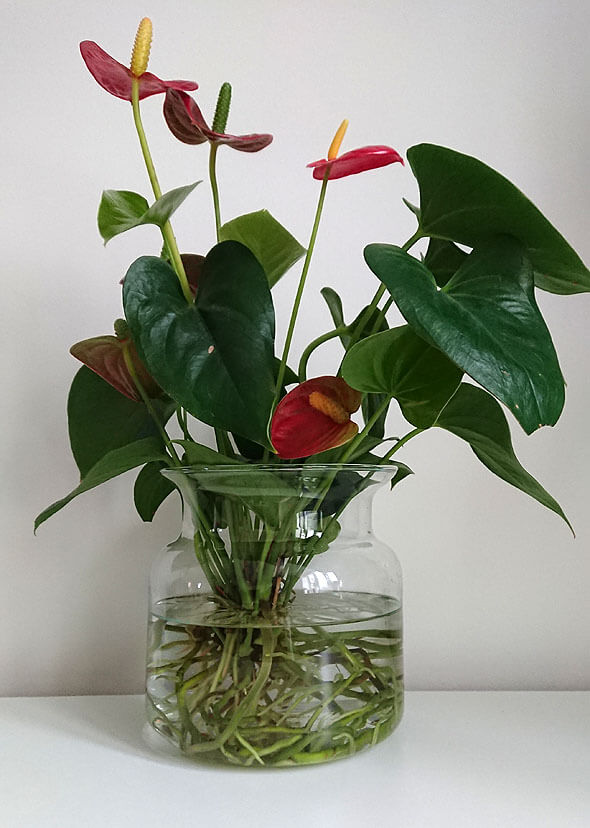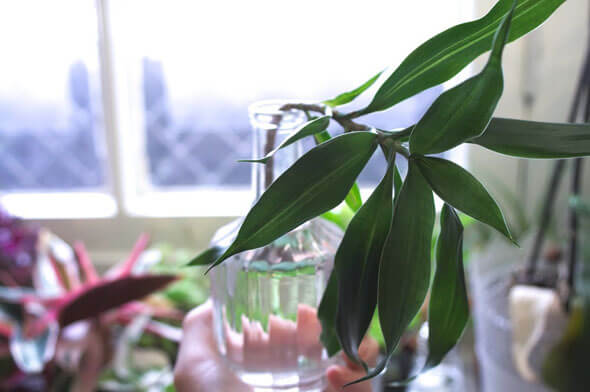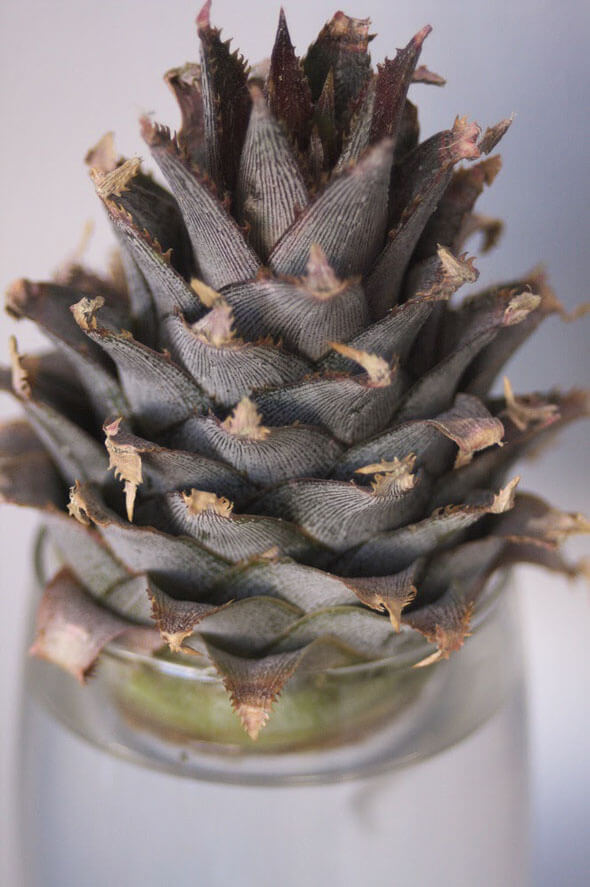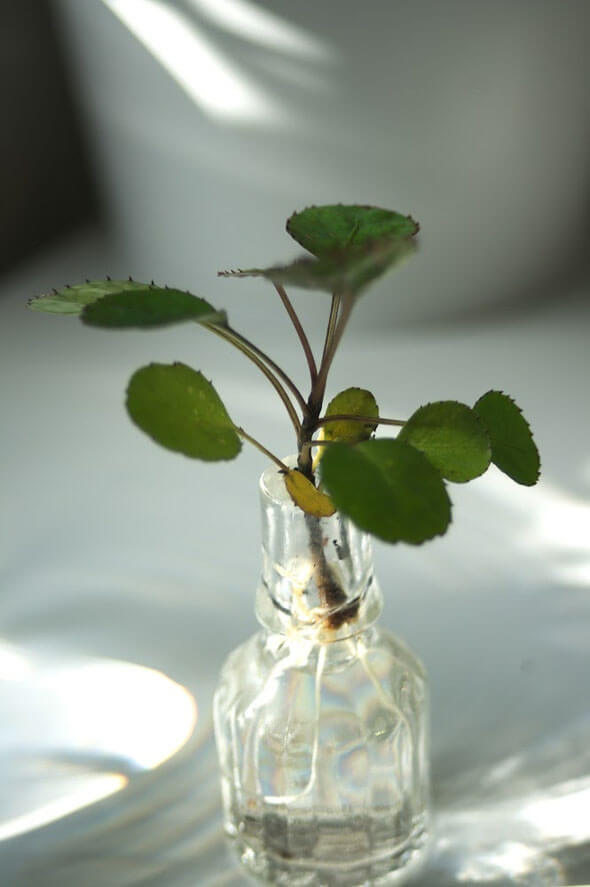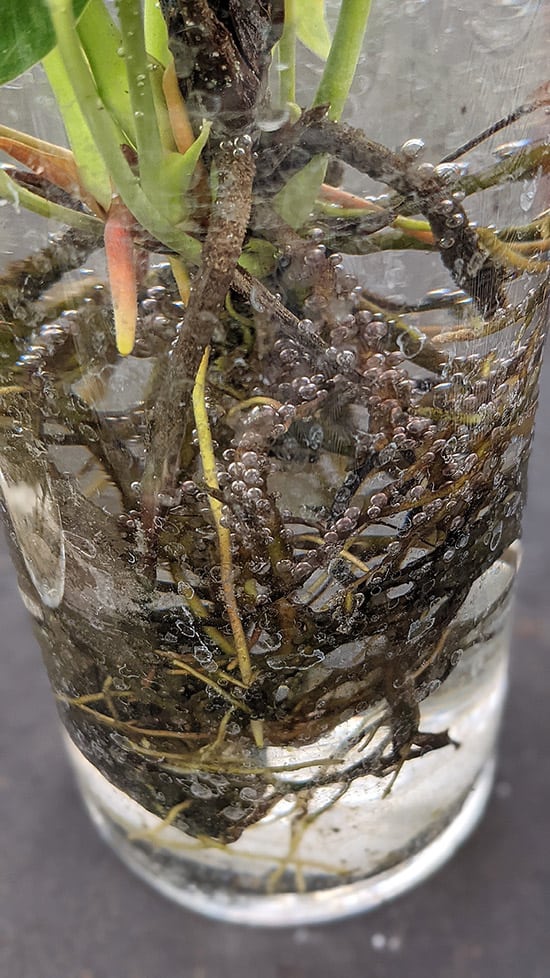Let's be absolutely frank here: we all forget to water our plants sometimes. And for those of us who tend to travel, it's not uncommon to return to shrivelled or overwatered greenery due to miscommunications with the plant sitter. Yikes.
The solution is here! Ditch the soil and grow your plants in water permanently. Reduced maintenance and, with the right vase, a gorgeous centerpiece; what's not to love?
Anthurium houseplants are normally grown in soil, but they can do really well in water too
Can houseplants grow in water? The short answer? Yes!
You're probably familiar with the fact that you can take a cutting from a plant and place it in water for it to regrow. This is referred to as water propagation and it's a very popular way to produce more plants.
Once the cutting has grown its own root system, most indoor horticulturalists then move it to soil. However, you don't have to!
Did You Know?
Plants grown hydroponically, can use up to 90% less water than those grown in pots of soil.
In many cases, houseplants can thrive in water indefinitely as long as you provide what they need to continue growing. This is called hydroponic growing and it's great because it makes for a whole different way to display your houseplants. Who doesn't like greenery in a pretty vase or bottle?
It's fascinating to be able to glimpse for once at what normally happens below the soil, seeing the root system develop and grow in a glass container.
Additionally, as mentioned in the intro, hydroponic growing is the perfect solution for those who have trouble sticking to a regular houseplant watering schedule.
So how do you go about growing your own houseplant(s) hydroponically? Luckily, it's pretty easy.
Dracaena cutting rooting in water.

Hi, I'm Tom!
If you're like me and enjoy the challenge of growing houseplants and getting them to thrive, then Ourhouseplants can help. This website shares my knowledge and years of growing plants and provides (hopefully) helpful advice on properly caring for your indoor plant friends.
If you'd like to grow a houseplant in water, you could of course take a fully grown plant out of its pot. If you thoroughly clean the roots of any dirt it would most likely be able to adjust to its feet being submerged and continue growing.
Did you know?
Some plants actually need to be grown in water completely to survive, like Marimo Moss Balls.
To avoid the extra work of having to take a plant out of its existing container (and to obtain a fully new plant for free - bonus!), my preferred option is propagation.
This involves taking a piece of an existing plant and placing the base in water. As mentioned before, if you took the cutting correctly, it will soon grow a new root system and then continue producing new foliage.
A pineapple top can be rooted in water and will continue growing.
The process of taking a cutting differs from plant to plant. With vining plants like Pothos and English Ivy, you can just snip a piece off a vine. Suckering plants like Sansevieria or the popular Pilea Peperomioides can be propagated from the offsets they produce at their base.
Tip!
This soil-less method also works for herbs. That way you get a pretty centerpiece to display and use while cooking.
Some Begonias can be propagated using just one small section of a single leaf and Dracaena stems can be cut into lots of small pieces, all of them viable.
To find out the best way to take a cutting from your plant, have a look at the full propagation guide in the articles linked to in the above paragraphs.
Now that you have successfully obtained your cutting, let's move on to rooting it.
Polyscias Fabian cutting that has grown new roots
If you followed all the steps above you should now have a happy cutting working hard to produce its new root system. Hurrah!
The advantage of growing houseplants in water is that they require very little maintenance, although there are still a few tasks to stay on top of.
Many air bubbles attached to a plant's roots might indicate a water change is needed. Or there could be a small build-up of Algae on the roots that need washing off. However, this can also be a natural occurrence in bright areas.
What do you think?
Is this something you might try? Perhaps you do it already? Let us know in the comments below.
